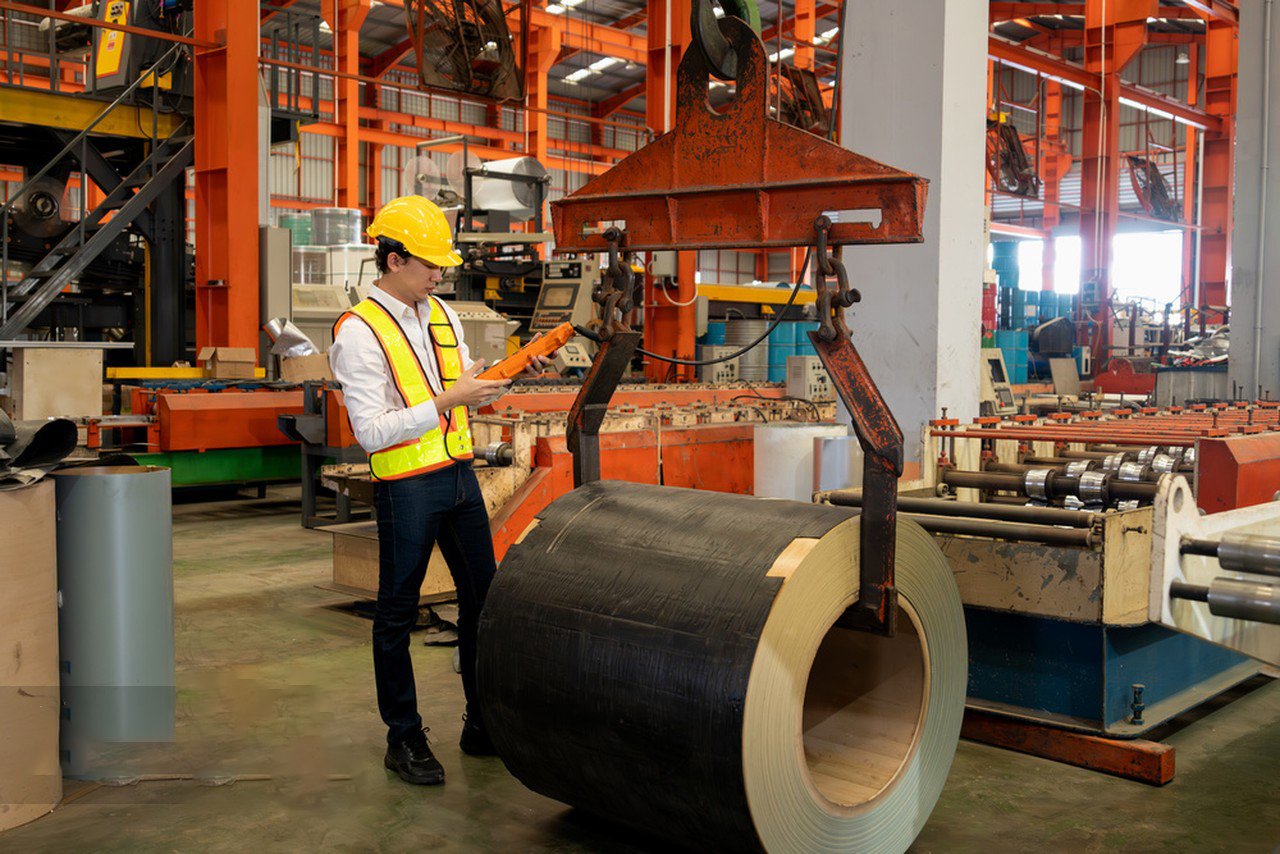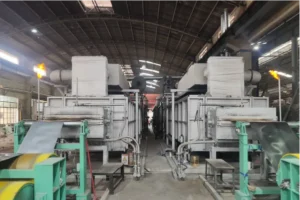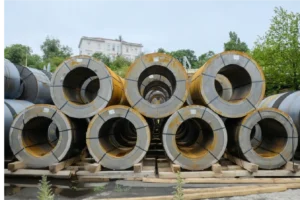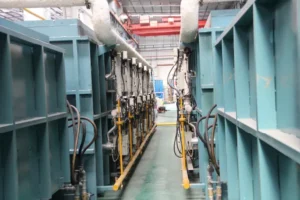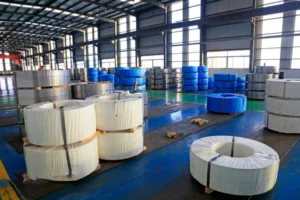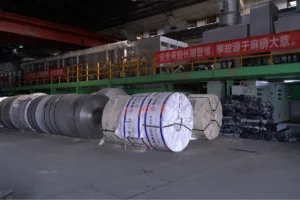Stainless Pipe Dimensions Chart DN 15 – 600 [PDF]
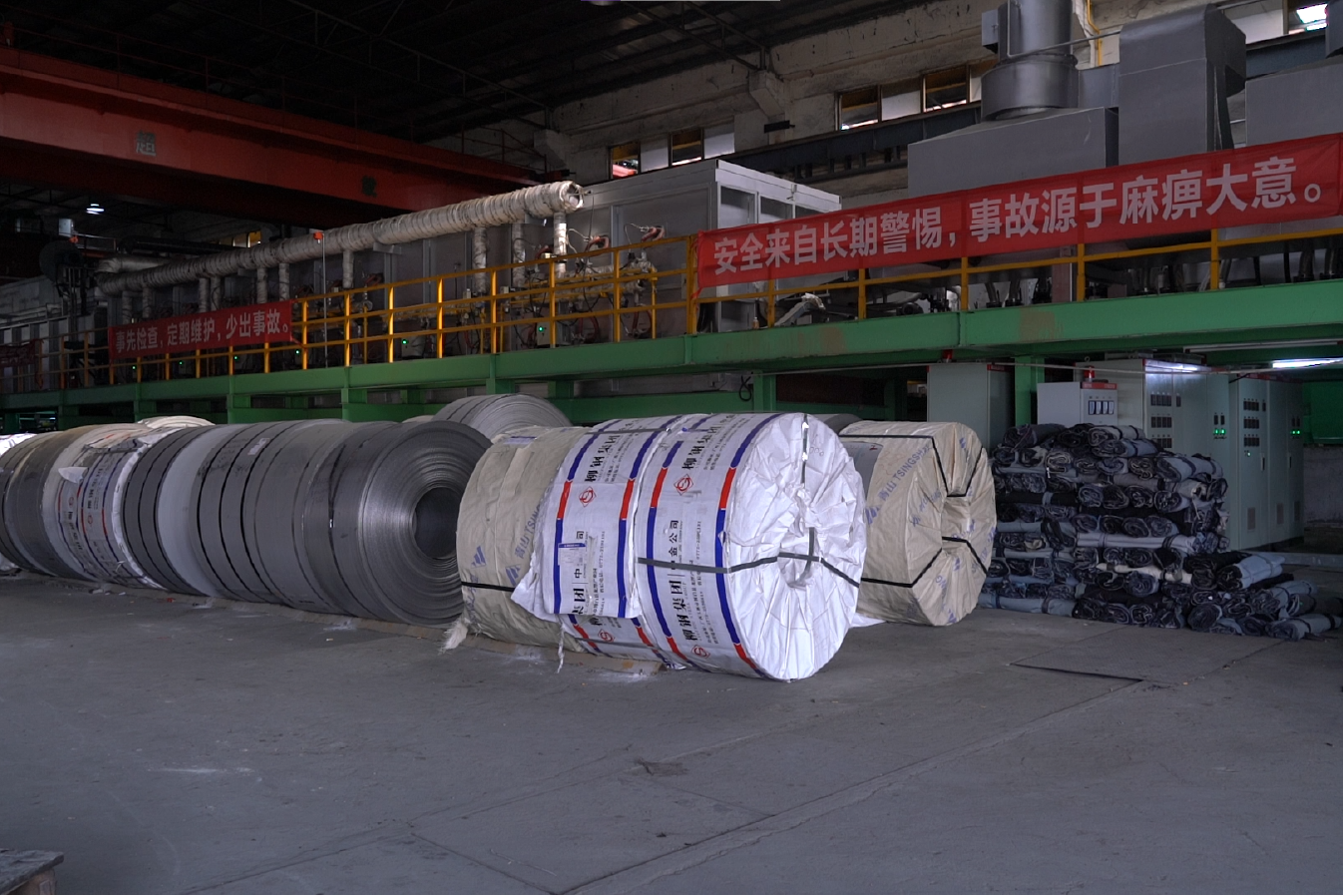
Are you struggling to find reliable and comprehensive stainless steel pipe dimension data for your projects? This critical information gap can often lead to design errors, material wastage, and costly project delays, causing significant frustration. Imagine having a single, authoritative source for all DN 15 to DN 600 pipe specifications at your fingertips.
A stainless pipe dimensions chart for DN 15 – 600 is an essential engineering tool providing standardized measurements like Nominal Diameter (DN), Outside Diameter (OD), Wall Thickness (WT), and Pipe Schedule (SCH). This data ensures accurate material selection, design, and installation for various applications.
Navigating the complexities of pipe specifications can be daunting, but it's fundamental for ensuring the integrity and efficiency of any piping system. This guide will not only provide you with access to a detailed chart but also empower you to understand and apply these dimensions effectively in your work. As Global Business Director at MFY, I've seen firsthand how crucial precise data is.
The world of stainless steel piping is built on precision. Standardized dimensions, like those detailed in our DN 15-600 chart, are the bedrock of interoperability and safety in global industries, from construction to manufacturing. However, the proliferation of various regional standards and occasional discrepancies in data can pose challenges. At MFY, we champion the use of universally recognized standards, like ISO and EN standards1, to streamline international trade and project execution. For instance, a study by the Construction Industry Institute (CII) highlighted that material management, including accurate specification, can impact project costs by up to 6%. Our goal with resources like this dimensional chart is to mitigate such risks, providing clarity and reliability, drawing from our experience in supplying stainless steel to diverse markets like India and Southeast Asia where such precision is paramount for successful project outcomes.
How to access and utilize the stainless pipe dimensions chart DN 15 – 600?
Feeling lost trying to locate a trustworthy stainless pipe dimension chart or unsure how to make the most of it once found? This uncertainty can lead to wasted time and potential misapplication of critical data. We provide clear, straightforward access and guidance for effective utilization.
Accessing the MFY stainless pipe dimensions chart DN 15 – 600 typically involves downloading a PDF from our official website, www.mfysteel.com. Utilization involves identifying project requirements and matching them against the chart's specifications for accurate pipe selection and system design.
Having ready access to accurate pipe dimensions is more than a convenience; it's a cornerstone of efficient engineering and project management. When you can quickly retrieve and confidently apply this data, you're not just saving time – you're preventing errors that could otherwise escalate into significant rework, material overruns, or even safety hazards. Imagine an engineering contractor in India, racing against a tender deadline. Quick access to our MFY chart means they can specify the correct stainless steel pipes for their bid without delay, enhancing their competitiveness. Similarly, a manufacturing company in Southeast Asia can swiftly verify pipe dimensions for a new equipment installation, ensuring seamless integration. At MFY, we understand these pressures. That's why we've made our comprehensive DN 15 – 600 chart easily accessible. This commitment to providing resources is part of our mission to support the global expansion of China's stainless steel supply chain, empowering our clients with the tools they need for success. This section will guide you through the simple steps to get your hands on this invaluable resource and, more importantly, how to integrate its data into your daily workflow for maximum benefit.
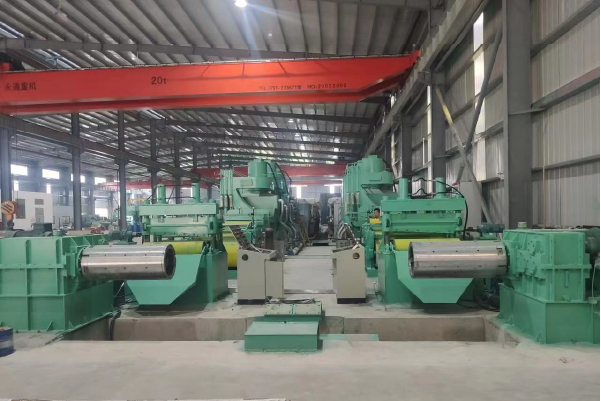
The journey from needing pipe specifications to applying them effectively begins with easy access and a clear understanding of utilization. In today's fast-paced engineering environment, the ability to quickly source and correctly interpret technical data is paramount. At MFY, we've prioritized making our Stainless Pipe Dimensions Chart DN 15 – 600 readily available, typically as a downloadable PDF from our website, www.mfysteel.com. This ensures that whether you're in the office or on a remote site, the information you need is just a few clicks away. We also understand that different users have different needs; for our larger clients, such as distributors and equipment integrators, we sometimes provide data in formats compatible with their inventory or design software, reflecting our commitment to digital innovation and customer-centric service. Once accessed, the chart becomes a powerful tool. Its utilization spans the entire project lifecycle, from initial design and material take-off to procurement and final installation. We encourage users to save a local copy for quick reference but also to periodically check our website for any updates, ensuring they are always working with the most current specifications. This diligence is crucial, as standards can evolve, and even minor dimensional changes can have significant implications.
The Importance of Digital Accessibility in Modern Engineering
The shift from cumbersome physical handbooks to digital resources has revolutionized how engineers and project managers access critical information. In my early days in the industry, I remember sifting through pages of printed catalogs, a time-consuming process prone to error. Today, digital charts, like the MFY Stainless Pipe Dimensions Chart, offer unparalleled speed and convenience. This digital accessibility means that a project manager in the Middle East overseeing a large construction project can instantly share precise pipe specifications with their procurement team in China, ensuring everyone is on the same page.
Industry data supports this transition. A survey by Engineering.com found that over 85% of engineers now rely on digital resources and online databases for technical information, citing speed and ease of access as primary benefits. This accessibility also facilitates better collaboration. For instance, one of MFY's clients, an engineering contractor in India named "BuildWell Engineers," recently shared how they used our downloadable PDF chart during a critical design phase for a new water treatment facility. Their team, spread across multiple locations, could all reference the exact same document, eliminating confusion and ensuring that their material requisitions for DN 200 and DN 300 stainless steel pipes were perfectly accurate, aligning with the project's hydraulic design parameters.
At MFY, we view digital accessibility as a core component of our service. Our website, www.mfysteel.com, is designed to be a hub for such resources. We understand that for clients like "BuildWell Engineers," or manufacturing companies integrating our stainless steel pipes into their machinery, having instant access to reliable data is not just a convenience—it's essential for maintaining project timelines and budgets. This commitment to digital innovation is part of our broader vision to be a leading international trade and service brand in China’s stainless steel industry, by empowering our clients with the tools they need to succeed in a rapidly evolving global market.
Best Practices for Utilizing Dimension Charts Effectively
Once you've accessed a dimension chart, like our MFY DN 15-600 guide, effective utilization is key to preventing errors. The first step I always recommend is to confirm the chart's version and date of publication. Standards do get updated, and using an obsolete chart can lead to specifying pipes that are no longer standard or, worse, unsuitable for the intended application. For example, the ASME B36.19M standard for stainless steel pipes has seen revisions, and it's crucial the chart reflects the current version. Always verify units of measurement – typically millimeters for DN, OD, and WT in metric charts, but ensure consistency.
Next, meticulously cross-reference the chart's data with your specific project requirements. A common scenario I've encountered with clients, like "Precision Fabricators," a manufacturing company in Southeast Asia, involves selecting pipes for a new chemical processing line. They needed to ensure the chosen DN 150 pipe's wall thickness (Schedule 40S in their case) could handle the specified operating pressure and temperature, while also ensuring the OD was compatible with their existing flange connections. They used our MFY chart to confirm the exact OD (168.3 mm) and WT (7.11 mm) for 316L stainless steel pipe, which directly informed their procurement and fabrication planning. This level of detail prevents costly rework.
One common pitfall is confusing nominal sizes (like DN or NPS) with actual outside diameters, especially when working across different standards or with inexperienced team members. Another is failing to account for manufacturing tolerances, which are also defined by standards like ASME B36.19M. While our MFY charts provide the nominal standardized dimensions, it's good practice for engineers to be aware of these allowable variations, especially for critical fit-up applications. Regularly training your team on how to interpret these charts and emphasizing a double-check system can significantly reduce errors and improve project outcomes.
Integrating Chart Data into Workflow and Software
The true power of a dimension chart is realized when its data is seamlessly integrated into your existing engineering and project management workflows. While manual lookup is common for quick checks, for larger projects or repetitive tasks, integrating this data into software can significantly boost efficiency and accuracy. Many of our clients, particularly engineering and construction contractors, utilize CAD (Computer-Aided Design) and BIM (Building Information Modeling) software. Manually inputting pipe dimensions for hundreds of pipe runs is not only tedious but also a major source of potential errors.
At MFY, reflecting our focus on digital innovation, we are exploring ways to make our dimensional data even more accessible for software integration. For instance, providing data in formats like CSV or through APIs (Application Programming Interfaces) could allow clients to directly import pipe libraries into their design software. This ensures that the 3D models accurately reflect real-world pipe dimensions, which is critical for clash detection and generating accurate bills of materials. Imagine an equipment integrator designing a complex skid-mounted system; having direct access to MFY’s stainless steel pipe data (e.g., for DN 50, DN 80, DN 100 pipes) within their CAD environment saves hours of manual data entry and reduces the risk of specifying an incorrect component. The growth of BIM adoption in construction, estimated by some reports to be increasing at over 10% annually in many regions, underscores the need for such digital integration.
Looking ahead, the integration might become even more sophisticated. AI-assisted specification tools could draw upon standardized charts like ours to recommend optimal pipe sizes based on input parameters like flow rate, pressure, and fluid type. While this is more futuristic, the current trend is clear: moving from static PDF charts to more dynamic and integrated data solutions. MFY aims to be at the forefront of this evolution in the stainless steel industry, continually seeking ways to make our clients' work easier and more precise. For now, even a well-structured PDF can be a source for creating custom libraries in CAD software, a practice we see among many of our advanced clients.
| Access Method | Pros | Cons | MFY's Approach |
|---|---|---|---|
| PDF Download | Universally accessible, easy to store/print, fixed reference | Static data, manual input for software, potential for version issues | Primary current offering on www.mfysteel.com |
| Online Viewer | Always up-to-date, interactive potential | Requires internet access, may not be suitable for offline use | Future consideration for enhanced user experience |
| Direct API/Data Feed | Seamless software integration, real-time updates, reduced errors | Requires IT setup/compatibility, security considerations | Exploring for key clients & future digital strategy |
| Spreadsheet (CSV) | Easy to import into various software, sortable/filterable | Data integrity can be compromised if edited, version control | Provided on request for specific client needs |
DN stands for Nominal DiameterTrue
DN is the abbreviation for Nominal Diameter, a standardized measurement used in pipe specifications.
MFY provides API accessFalse
While MFY is exploring API/data feed options, they currently primarily offer PDF downloads of their dimension charts.
Understanding the key metrics and specifications in the dimension chart
Are you often puzzled by the array of acronyms and numbers like DN, OD, SCH on a pipe chart? This confusion can lead to misinterpreting vital specifications, risking incorrect material orders and flawed designs. We're here to demystify these key metrics for you.
Key metrics in a stainless pipe dimension chart include Nominal Diameter (DN) indicating size, Outside Diameter (OD) for exact external width, Wall Thickness (WT) for pipe strength, and Pipe Schedule (SCH) relating to pressure-bearing capacity. Understanding these is crucial for correct application.
Grasping the meaning behind each specification in a dimension chart is like learning the alphabet before you can read a book – it’s fundamental. These metrics are not just arbitrary numbers; they are standardized codes that communicate critical information about a pipe's suitability for a specific application. As someone who has worked extensively with global clients at MFY, from manufacturing companies in Southeast Asia to engineering contractors in the Middle East, I've seen how a precise understanding of these terms prevents costly mistakes. For example, selecting a pipe with an inadequate Wall Thickness for a high-pressure application can have catastrophic consequences. Similarly, a misunderstanding between DN and actual OD can lead to incompatible fittings, causing project delays and material waste. This section will break down each key metric – DN, OD, WT, Schedule, and even touch upon material grade implications – ensuring you can read and interpret our MFY dimension chart with confidence. We want to empower you to select the perfect stainless steel coil, sheet, or pipe for your needs.
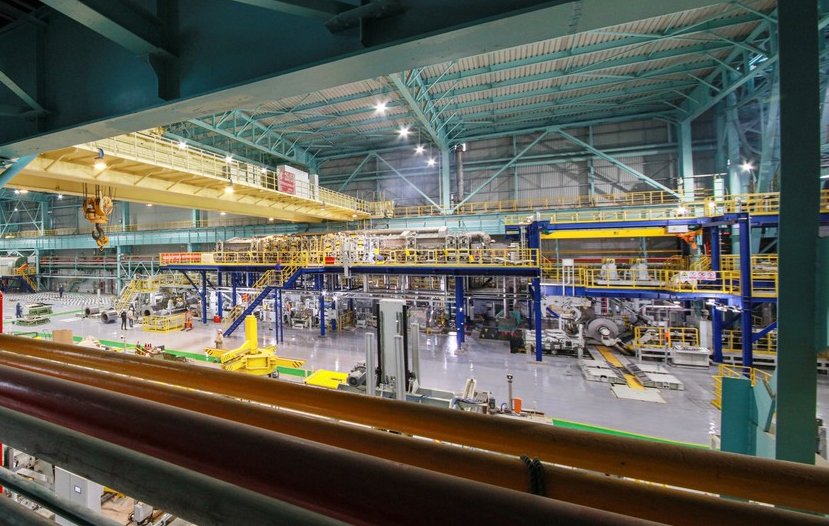
Delving into the specifics of a stainless steel pipe dimension chart reveals a language that, once understood, unlocks a wealth of information critical for any engineering project. These metrics are the DNA of a pipe, defining its capabilities and limitations. At MFY, we ensure our charts are clear and adhere to international standards, because we know that precision here translates directly to project success for our clients, whether they are distributors in India stocking inventory or equipment integrators in Russia designing complex machinery. A seemingly small detail, like the difference between Schedule 10S and Schedule 40S for a DN 100 pipe, has significant implications for pressure rating, weight, and cost. For instance, a DN 100 (4 inch) Schedule 10S pipe typically has a wall thickness of around 3.05mm, while a Schedule 40S pipe of the same DN has a wall thickness of about 6.02mm. This directly impacts its ability to withstand internal pressure and its overall structural integrity. Our experience in exporting to diverse markets like India, Southeast Asia, and the Middle East has shown us that a universal understanding of these terms is vital for smooth international trade and project execution. This deep dive will equip you with the knowledge to navigate these specifications like a seasoned professional, making informed decisions that optimize performance and cost.
Decoding Nominal Diameter (DN) and its Global Significance
The Nominal Diameter, or DN (Diamètre Nominal), is a fundamental metric you'll encounter on any pipe dimension chart. It's a dimensionless designator used in metric pipe standards (like ISO 6708 and EN 10255) to indicate the approximate internal bore or flow capacity of a pipe. It's important to understand that DN is a nominal size, not an exact, measurable dimension. For instance, a DN 50 pipe doesn't necessarily have an internal diameter of precisely 50mm, but it corresponds to a standard size category. Its imperial counterpart is NPS (Nominal Pipe Size), and often, you'll see charts that provide both for clarity, e.g., DN 50 is roughly equivalent to NPS 2".
The global significance of DN lies in standardization. For international trade and projects involving components from different countries, standardized sizing is crucial. As MFY exports stainless steel pipes to markets like Russia, where GOST standards are prevalent, and Southeast Asia, which often uses a mix of ISO, JIS, and ASME standards, a clear understanding of DN helps bridge potential communication gaps. For example, when a client in Russia specifies a GOST-compliant DN 80 pipe, we at MFY can readily match this with the equivalent ISO or EN standard pipe from our production, ensuring compatibility. This standardization, facilitated by metrics like DN, is vital for MFY's mission to drive the global expansion of China's stainless steel supply chain.
A common misconception is treating DN as the exact internal diameter (ID) or even the outside diameter (OD). The actual ID will vary depending on the pipe's wall thickness (and thus its Schedule). For instance, a DN 100 pipe will have a different ID if it's Schedule 10S versus Schedule 80S, even though the DN remains 100. The OD for a given DN is generally fixed by standards (e.g., DN 100 pipe typically has an OD of 114.3 mm or 4.5 inches according to ASME B36.10M/B36.19M). Therefore, engineers must always refer to the specific OD and WT values in the chart alongside the DN to ensure accurate design and material selection.
The Critical Role of Outside Diameter (OD) and Wall Thickness (WT)
While Nominal Diameter (DN) gives a general size category, the Outside Diameter (OD) and Wall Thickness (WT) are precise, measurable dimensions critical for engineering design and compatibility. The OD is the actual external diameter of the pipe. This dimension is paramount when selecting fittings like flanges, clamps, or when pipes need to pass through specific openings or be integrated into equipment. For any given DN or NPS, the OD is typically standardized. For example, a DN 25 (NPS 1) pipe, according to ASME B36.19M (for stainless steel), has a fixed OD of 33.4 mm (1.315 inches).
Wall Thickness (WT), often expressed in millimeters or inches, dictates the pipe's strength, its ability to withstand internal pressure and external loads, and its overall weight and cost. For a given OD, a thicker wall means a smaller internal diameter and a higher pressure rating. Standards like ASME B31.3 (Process Piping) provide formulas to calculate the required wall thickness based on design pressure, temperature, material allowable stress, and OD. For example, a pipe intended for high-pressure steam service will require a significantly greater WT than a pipe for low-pressure water drainage, even if they share the same DN and OD. MFY produces stainless steel pipes with a wide range of wall thicknesses to cater to diverse industrial needs, from thin-walled pipes for decorative or low-pressure applications to heavy-walled pipes for demanding structural or high-pressure environments.
Variations in OD and WT, even within manufacturing tolerances, can significantly affect project outcomes. I recall a client, an equipment integrator in the Middle East, "GulfTech Solutions," who was building a series of compact heat exchangers. They required stainless steel tubes with a very precise OD of 19.05 mm and a specific WT of 1.65 mm to ensure a snug fit within the tube sheets and optimal heat transfer. Any deviation beyond the tight tolerances would lead to leakage or reduced efficiency. MFY's ability to supply pipes meeting these exact OD/WT specifications, verified against our dimensional charts and production controls, was crucial for their project's success. This underscores why clearly understanding and specifying both OD and WT from a reliable chart is essential.
Pipe Schedules (SCH) and Their Implication on Pressure Handling
Pipe Schedule (SCH) is another critical specification found on dimension charts, particularly for pipes manufactured to ASME/ANSI standards. It's a dimensionless number that relates to the wall thickness of a pipe for a specific Outside Diameter (OD). Originally conceived to simplify pipe specification for different pressure services, a higher schedule number for a given DN/NPS generally indicates a heavier wall (greater wall thickness) and thus a higher pressure-bearing capacity. Common schedules for stainless steel pipes include SCH 5S, 10S, 40S, and 80S, where the "S" suffix typically denotes stainless steel suitability and often implies wall thicknesses according to ASME B36.19M (which covers stainless steel pipe dimensions). Pipes without the 'S' (e.g., SCH 40, SCH 80) usually refer to ASME B36.10M (covering carbon and alloy steel pipes), though some dimensions overlap.
The relationship between schedule, wall thickness, and pressure rating is direct: for the same nominal pipe size and material, a higher schedule number means a thicker wall, resulting in a stronger pipe capable of handling higher internal pressures. For instance, for a DN 50 (NPS 2) stainless steel pipe:
- SCH 10S might have a WT of 2.77 mm and a lower pressure rating.
- SCH 40S would have a WT of 3.91 mm and a medium pressure rating.
- SCH 80S would have a WT of 5.54 mm and a higher pressure rating.
It's vital to consult standards like ASME B31.3 for actual pressure rating calculations, as material properties and temperature also play significant roles.
Choosing the right schedule is paramount for both safety and economy. Over-specifying (e.g., using SCH 80S where SCH 10S would suffice) leads to unnecessary material cost, increased weight (impacting structural supports and handling), and potentially more complex welding. Under-specifying can lead to catastrophic failure. For example, low-pressure fluid transport in a food processing plant might utilize lightweight SCH 10S or SCH 5S stainless steel pipes (as supplied by MFY) for cost-effectiveness and ease of installation. Conversely, high-pressure hydraulic systems in an engineering construction project or process piping in a chemical plant would demand heavier schedules like SCH 40S or SCH 80S to ensure operational safety. Our MFY dimension chart clearly lists the wall thicknesses associated with different schedules for each DN, helping engineers make these critical selections.
| Metric | Unit(s) | Significance | Common Standards Referenced |
|---|---|---|---|
| Nominal Diameter | DN (mm), NPS (inch) | General size indicator, relates to flow capacity | ISO 6708, EN 10255, ASME B36.10M/B36.19M |
| Outside Diameter | OD (mm / inch) | Exact external dimension, crucial for fittings and interfacing | ASME B36.10M/B36.19M |
| Wall Thickness | WT (mm / inch) | Determines pipe strength, pressure rating, weight, and internal diameter | ASME B36.10M/B36.19M |
| Pipe Schedule | SCH (dimensionless) | Relates wall thickness to OD for pressure handling capacity (higher SCH = thicker wall) | ASME B36.10M/B36.19M |
| Length | m / ft | Standard or custom cut lengths for project planning and material estimation | Manufacturer specific, project needs |
| Material Grade | e.g., 304L, 316Ti | Chemical composition, defines mechanical properties and corrosion resistance | ASTM A312, EN 10217-7 |
DN indicates approximate sizeTrue
Nominal Diameter (DN) is a standardized size indicator, not an exact measurement of internal diameter.
SCH directly measures pressureFalse
Pipe Schedule (SCH) indicates wall thickness which affects pressure capacity, but doesn't directly measure pressure.
Step-by-step guide to interpreting the dimensions for various pipe applications
Knowing the terms on a dimension chart is one thing, but can you confidently apply them to select the right pipe for a specific job? This gap can lead to incorrect choices, resulting in operational inefficiencies or even safety risks. A clear guide is needed.
To interpret dimensions for pipe applications: 1. Define application needs (fluid, pressure, temperature, load). 2. Match these needs to chart parameters (DN for flow, WT/SCH for pressure/load, OD for interface). 3. Verify material compatibility and standards.
Bridging the divide between theoretical knowledge of pipe dimensions and their practical application is where true engineering skill comes into play. It’s not enough to simply identify the OD or WT from a chart; you must understand how these figures translate into performance within a specific context. As someone who interacts daily with clients like manufacturing companies and engineering contractors at MFY, I’ve seen the direct impact of precise interpretation. For instance, selecting a pipe with an appropriate DN is crucial for achieving desired flow rates in a fluid transport system, while choosing the correct Schedule based on WT is vital for ensuring a pipe can withstand operational pressures in a chemical plant. This section is designed to be your practical compass, guiding you through the process of interpreting our MFY stainless pipe dimension chart (DN 15-600) for a range of common applications, from simple fluid lines to more complex structural uses. We'll explore how to translate your project's unique demands into the language of pipe specifications, ensuring you make choices that are safe, efficient, and cost-effective, leveraging MFY’s diverse product range including stainless steel coil, sheet, and pipe.
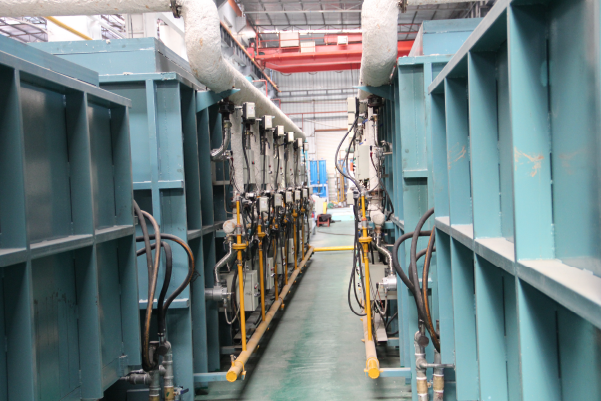
Interpreting pipe dimensions effectively means translating a project's functional requirements into specific, quantifiable pipe parameters. It's a critical decision-making process that impacts everything from system performance and safety to overall project cost. At MFY, we support our clients not just with high-quality stainless steel products but also with the information needed to use them correctly. Whether you're an engineering contractor in the Middle East2 designing a large-scale desalination plant or a food processing equipment integrator in Southeast Asia, the ability to accurately interpret the DN 15-600 chart for your specific application is non-negotiable. For example, for a low-pressure water system, a thinner wall (lower Schedule) stainless steel pipe might be perfectly adequate and more economical. However, for a high-temperature, high-pressure steam line, a heavier wall (higher Schedule) of a suitable grade like 316Ti would be essential. This section will walk you through a systematic approach, using practical examples, to ensure that when you look at our MFY dimension chart, you see not just numbers, but solutions tailored to your application needs. This aligns with our mission to facilitate the global use of China's stainless steel by providing both superior products and expert guidance.
Application-Driven Selection: Fluid Transport Systems
When selecting stainless steel pipes for fluid transport systems – be it water, chemicals, petrochemicals, or food products – the primary considerations are typically flow rate, fluid characteristics (corrosivity, viscosity), operating pressure, and temperature. These factors directly influence the choice of Nominal Diameter (DN), Wall Thickness (WT), and, implicitly, the material grade (though our focus here is on dimensions from the chart). For instance, a higher required flow rate generally necessitates a larger DN to maintain optimal fluid velocity and minimize pressure drop. Our MFY chart, covering DN 15 to DN 600, provides a wide range to suit diverse flow requirements.
Let's consider a practical example: an MFY client, "AquaPure Solutions," an EPC contractor in the Middle East, was designing a new reverse osmosis water treatment plant. They needed to select appropriate DN sizes for various sections of the plant. For the main permeate lines carrying treated water, they calculated a required flow rate that translated to a DN 300 pipe to keep frictional losses within acceptable limits. Using the MFY dimension chart, they could then identify the standard OD (323.9mm for ASME B36.19M) and select an appropriate Schedule (e.g., SCH 10S, WT 4.57mm) suitable for the relatively low operating pressures of that section, ensuring cost-effectiveness without compromising performance. ASTM A312 Grade 316L was chosen for its corrosion resistance.
Interpreting the chart for optimal flow also involves considering the internal diameter (ID), which is derived from the OD and WT (ID = OD - 2*WT). While DN gives an approximation, the actual ID is crucial for precise hydraulic calculations. Engineers often use formulas like the Hazen-Williams or Darcy-Weisbach equations to model pressure drop, and the ID is a key input. Some studies suggest that even a 10% reduction in ID from the design value (due to incorrect pipe selection or internal scaling) can increase pumping energy costs by over 20% in certain systems. Thus, careful interpretation of OD and WT from the MFY chart to determine the true ID is vital for designing energy-efficient fluid transport systems.
Structural Applications: Load Bearing and Frameworks
Stainless steel pipes are not only for conveying fluids; they are also extensively used in structural applications, such as architectural frameworks, supports for equipment, handrails, and offshore platforms, due to their strength, durability, and corrosion resistance. When interpreting the dimension chart for these uses, the key considerations shift from flow dynamics to mechanical properties: load-bearing capacity, stiffness (resistance to bending), torsional rigidity, and overall weight. The Outside Diameter (OD) and Wall Thickness (WT) are the most critical dimensional parameters here. A larger OD and a greater WT generally contribute to higher strength and stiffness.
For example, a construction contractor client of MFY in Southeast Asia, "StructuRight Builders," was tasked with designing and erecting an exposed architectural support system for a public canopy. They needed stainless steel pipes that could withstand specific wind loads and dead loads while maintaining an aesthetic appeal. They consulted our MFY dimension chart, considering DN 150 (OD 168.3mm) and DN 200 (OD 219.1mm) pipes. For each DN, they evaluated different Schedules (e.g., SCH 10S, SCH 40S) to find the optimal balance between the required moment of inertia (a measure of stiffness, calculated using OD and ID derived from WT) and the material cost/weight. Specifically, the second moment of area (I) for a pipe is proportional to (OD⁴ - ID⁴), highlighting the significant impact of these dimensions on bending resistance.
Choosing the right dimensions involves engineering calculations based on anticipated loads and relevant building codes (e.g., Eurocode 3 for steel structures, or AISC standards). A thicker wall for a given OD increases the cross-sectional area of steel, directly enhancing its compressive and tensile strength, as well as its resistance to local buckling under compressive loads. For instance, data might show that a DN 150 SCH 40S pipe (WT 7.11mm) offers approximately 2.5 times the bending stiffness of a DN 150 SCH 10S pipe (WT 3.40mm), albeit at a higher material weight. MFY's ability to supply a range of stainless steel pipes, like Grade 304 or 316, in various ODs and WTs allows engineers like those at "StructuRight Builders" to precisely match structural requirements with the most efficient pipe dimensions from our chart.
Specialized Applications: Heat Exchangers and Process Piping
In specialized applications like shell-and-tube heat exchangers or intricate process piping in pharmaceutical or food industries, the interpretation of pipe dimensions becomes even more nuanced, demanding high precision. Critical factors here often include not only pressure and temperature capabilities but also thermal conductivity (influenced by wall thickness), surface finish, cleanability, and extremely precise fit-up to minimize dead legs or contamination points. For heat exchanger tubes, the Outside Diameter (OD) and Wall Thickness (WT) are paramount. A thinner WT is often preferred for better heat transfer rates (as thermal resistance is proportional to thickness), provided it meets pressure and structural requirements. Common ODs for heat exchanger tubes supplied by MFY might range from 19.05mm (3/4") to 25.4mm (1"), with WTs often in the 1.24mm to 2.11mm range (e.g., BWG 18 to 14).
Consider an MFY client, "PureProcess Integrators," an equipment integrator building aseptic processing systems for the dairy industry in Europe. They require stainless steel tubes (often ASTM A270 for sanitary applications) with highly controlled OD, WT, and internal surface roughness. When they consult a dimension chart, they are looking for specific ODs like 38.1mm or 50.8mm that match standard sanitary fittings (e.g., Tri-Clamp). The WT (e.g., 1.65mm) must be precise to ensure consistent internal volume and weldability. For them, interpreting dimensions also involves considering tolerances. TEMA (Tubular Exchanger Manufacturers Association) standards, for instance, specify tolerances for tube OD, WT, and straightness, which are critical for easy assembly into tube sheets and ensuring baffle integrity.
MFY’s manufacturing processes for stainless steel pipes and tubes are geared towards meeting such stringent dimensional requirements. For process piping, beyond the standard DN/Schedule system, specific OD/WT combinations are often selected to optimize flow, ensure drainability, and match specialized fittings. For example, a DN 25 (1-inch) process line might use a tube with an OD of 25.4mm and WT of 1.65mm for sanitary applications, which differs from a standard Schedule pipe. Interpreting the dimension chart here means looking beyond just the DN and Schedule to find the exact OD/WT combinations that meet these specialized industry standards, such as those for hygienic or pharmaceutical applications where MFY’s 316L stainless steel pipes are often preferred.
| Application Type | Key Dimensional Considerations from Chart | Example Metric Values (Illustrative) | Focus Points |
|---|---|---|---|
| General Fluid Transport | DN, OD, WT (for ID calculation), Schedule | DN 100, OD 114.3mm, SCH 10S (WT 3.05mm) | Flow rate, pressure drop, fluid compatibility |
| High-Pressure Fluid | DN, OD, WT (higher value), Schedule (higher) | DN 50, OD 60.3mm, SCH 80S (WT 5.54mm) | Pressure rating, safety factor, material strength |
| Structural Support | OD, WT (for cross-sectional area & stiffness) | OD 168.3mm (DN150), SCH 40S (WT 7.11mm) | Load capacity, bending stiffness, buckling |
| Heat Exchanger Tubes | OD (precise), WT (often thin for thermal) | OD 19.05mm, WT 1.65mm (BWG 16) | Heat transfer, fit in tube sheet, pressure |
| Sanitary Process Piping | OD (specific for fittings), WT (for hygiene) | OD 50.8mm (2"), WT 1.65mm | Cleanability, drainability, surface finish |
DN determines flow capacityTrue
Nominal Diameter (DN) is the primary dimension for sizing pipes to achieve required flow rates in fluid systems.
Thinner walls always betterFalse
While thinner walls improve heat transfer in exchangers, they reduce pressure capacity and structural strength where needed.
How to apply the dimensions in practical scenarios and projects?
You've studied the chart and understand the metrics, but how do you translate this knowledge into concrete actions on a real-world project? This uncertainty can lead to hesitation and potential errors during critical project phases like procurement or design. Practical application is key.
Apply dimensions by using chart data for accurate Material Take-Offs (MTOs), ensuring pipe OD/Schedule compatibility with fittings and equipment, and verifying spatial fit through design software using precise OD and length specifications.
The true test of understanding stainless steel pipe dimensions lies in their application within the dynamic environment of actual projects. It's about moving from theory to practice, transforming numbers on a chart into tangible components of a functional system. At MFY, as a supplier of stainless steel coil, sheet, and pipe, we frequently assist clients – from distributors planning inventory to engineering contractors executing complex installations – in this very process. Imagine a project manager for a large manufacturing plant expansion in Southeast Asia; they need to ensure that the hundreds of meters of stainless steel pipe ordered not only meet the pressure and flow requirements but also seamlessly integrate with existing infrastructure and new equipment. This requires meticulous application of dimensional data for tasks like calculating exact quantities for procurement, ensuring every joint and connection is compatible, and using dimensions in design software to prevent clashes and optimize layouts. This section will explore these practical scenarios, offering insights and examples from my experience at MFY to help you confidently apply pipe dimensions from our DN 15-600 chart to your projects, minimizing risks and maximizing efficiency.
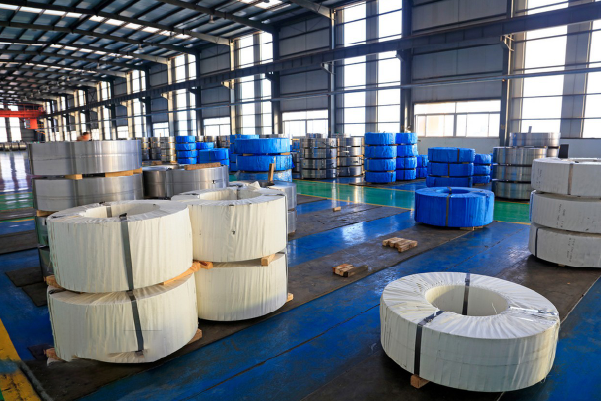
Applying stainless pipe dimensions in practical scenarios is where precision meets execution. It's the critical phase where the data from the MFY DN 15-600 chart transforms into physical assets that form the backbone of industrial processes, infrastructure, and manufacturing. I've seen countless projects where the careful application of these dimensions was the linchpin of success. For instance, an engineering contractor in India working on a tight deadline for a new chemical processing unit relied heavily on accurate dimensional data from our charts to prefabricate pipe spools. Any discrepancy in length, OD, or wall thickness for the DN 50, DN 80, and DN 100 pipes they were using could have led to significant on-site rework, delaying commissioning and incurring extra costs. This is why at MFY, we emphasize not just providing a comprehensive chart, but also supporting our clients in understanding how to apply this information. Whether it's for creating a detailed bill of materials3 for a large order by one of our distributor clients, or for an equipment integrator ensuring their machinery’s pipe connections align perfectly, the practical application of dimensions is paramount. This involves a keen eye for detail and a systematic approach, which we aim to foster through this guide.
Material Take-Off (MTO) and Procurement
One of the most immediate and crucial applications of a pipe dimension chart is in creating an accurate Material Take-Off (MTO) for procurement. An MTO is a detailed list of all materials required for a project, and for piping, this means specifying the exact type, grade, DN/NPS, Schedule/Wall Thickness, and total length of each pipe size. Using the MFY DN 15-600 chart, project engineers or procurement officers can precisely identify the required pipes. For example, if a process line requires 50 meters of DN 80, Schedule 40S, 316L stainless steel pipe, the chart confirms the OD (88.9mm) and WT (5.49mm) for this specification, ensuring the correct item is ordered.
Consider "IndoSteel Traders," a major MFY distributor client in India. They regularly prepare large indents for various projects. Their team meticulously uses dimensional charts to consolidate requirements from multiple smaller contractors. An accurate MTO, based on reliable chart data, is essential for them to optimize their orders from MFY, manage their inventory effectively, and provide correct materials to their end-users. An error in specifying, say, SCH 10S instead of SCH 40S for a significant quantity of DN 150 pipe, could lead to supplying under-specified material or holding unsaleable stock. Industry studies have shown that accurate MTOs can reduce material surplus and waste by 5-10%, contributing significantly to project cost savings.
At MFY, our integrated supply chain and strong production capacity are geared to fulfill such accurate MTOs efficiently. When a client like "IndoSteel Traders" submits a detailed order derived from precise dimensional data, we can ensure rapid export delivery of the exact stainless steel pipes required. This process minimizes ambiguity and streamlines procurement, allowing projects to proceed on schedule. The MTO isn't just a list; it's a critical communication tool between the project team, procurement, and suppliers like MFY, and its accuracy hinges on the correct application of dimensional chart data.
Ensuring Compatibility with Fittings and Equipment
Beyond ordering the correct pipes, applying dimensional data is vital for ensuring compatibility with a vast array of fittings (like elbows, tees, reducers, flanges) and equipment nozzles. The Outside Diameter (OD) of the pipe is the primary dimension that must match the corresponding dimension of the fitting. For example, if you are using DN 100 (NPS 4) Schedule 40S pipe, its OD is 114.3mm. Any butt-weld elbow or flange intended for this pipe must also be specified for a 114.3mm OD. Similarly, socket-weld or threaded fittings are designated by the nominal pipe size they are intended to connect with.
I recall a situation with "ThaiFab Industries," a manufacturing client in Southeast Asia, who were installing a new cooling water system. They had procured DN 50 Schedule 10S stainless steel pipes from MFY. When it came to sourcing flanges, an inexperienced engineer on their team almost ordered flanges based only on "DN 50" without specifying the schedule or pressure class, potentially leading to a mismatch. We advised them to ensure the flanges were not only for DN 50 pipe but also compatible with the lower pressure rating associated with Schedule 10S (e.g., Class 150 flanges might be appropriate, whereas Class 600 would be an expensive over-specification and potentially have different facing dimensions if not carefully checked). This highlights how OD from the chart, combined with schedule and pressure considerations, ensures correct fitting selection.
The role of manufacturing tolerances, as specified in standards like ASME B36.10M and B36.19M for pipes, and ASME B16.9 for butt-weld fittings or B16.5 for flanges, also comes into play. While our MFY charts provide the nominal dimensions, understanding these allowable variations is crucial for ensuring proper fit-up, especially in critical or high-precision assemblies. A slight deviation in OD beyond tolerance can make welding difficult or compromise joint integrity. Therefore, applying dimensional data here means meticulous cross-referencing between the pipe chart and the relevant fitting/flange standards.
Design Verification and Clash Detection in Projects
In modern engineering, especially for complex industrial plants or large construction projects, Computer-Aided Design (CAD) and Building Information Modeling (BIM) are indispensable tools. Accurate pipe dimensions from charts like MFY's DN 15-600 are fed into these software platforms to create detailed 3D models of piping systems. The primary application here is design verification and clash detection. By accurately modeling pipes with their correct Outside Diameters (OD) and routing them according to the design, engineers can visually inspect the layout and run automated checks to identify any physical interferences (clashes) between pipes, or between pipes and other structures, equipment, or cable trays.
Let's take an example of an MFY client, "MidEastConstruct," an engineering and construction contractor working on a major petrochemical plant expansion in the Middle East. Their BIM team extensively used dimensional data for various stainless steel pipe sizes (DN 50 up to DN 600) sourced from MFY. By inputting the precise OD for each pipe run, including insulation thickness where applicable, they were able to identify over 200 potential clashes in a congested pipe rack area during the design phase. Resolving these clashes in the digital model saved them an estimated thousands of dollars and several weeks of potential delays compared to discovering and rectifying them on-site during construction. Industry reports suggest that effective clash detection can reduce rework costs by as much as 5-12% of the total project cost.
MFY's commitment to providing precise dimensional data supports this critical application. When designers can trust the accuracy of the pipe ODs, wall thicknesses (which affect bend radii for larger pipes), and standard lengths, they can create more reliable models. This not only facilitates clash detection but also helps in optimizing pipe routing for material efficiency, accessibility for maintenance, and structural support requirements. As BIM adoption continues to grow globally, the demand for accurate, easily integrable dimensional data for components like stainless steel pipes will only increase, and MFY is prepared to meet this need.
| Scenario | Key Chart Data Used | Potential Pitfall if Data Misapplied | MFY Support / Solution |
|---|---|---|---|
| Material Take-Off (MTO) | DN/NPS, Schedule/WT, OD, Length, Material Grade | Incorrect quantities, wrong pipe type ordered, delays | Clear charts, responsive sales for clarification, reliable supply |
| Fitting Compatibility | OD, Schedule (for pressure class), DN/NPS | Mismatched pipe/fitting sizes, leaks, safety issues | Providing precise OD/WT data, advice on standard matching |
| Equipment Nozzle Connection | OD, Flange Standards (related to DN/Schedule) | Misalignment, inability to connect, process interruption | Consistent product quality meeting international standards |
| CAD/BIM Design & Clash Detection | OD (crucial), Standard Lengths, Bend Radii (derived) | Inaccurate models, undetected clashes, on-site rework | Provision of accurate dimensional data for MFY products |
| Pressure Rating Verification | WT, OD, Material Grade (used with design codes) | Under-specifying leading to failure, over-specifying cost | Supplying pipes with certified WTs meeting stated schedules |
OD determines fitting compatibilityTrue
The Outside Diameter (OD) from pipe dimension charts must match exactly with corresponding fittings to ensure proper connections.
Schedule numbers indicate lengthFalse
Schedule numbers specify wall thickness and pressure rating, not pipe length which is a separate dimension.
Tips for maintaining accuracy when using the dimensions chart in engineering tasks
Even with the best charts, errors in applying dimensional data can creep into your engineering tasks, can't they? These inaccuracies, seemingly small at first, can escalate into significant project setbacks, material waste, or even safety concerns. Proactive measures are essential.
To maintain accuracy with dimension charts: always use the latest dimensions chart, meticulously double-check all units of measurement, and consistently cross-verify critical dimensions against relevant industry standards and project specifications before finalization.
The pursuit of accuracy is relentless in engineering, and when it comes to stainless steel pipe dimensions, precision is not just a goal but a fundamental requirement. Having worked with diverse global clients at MFY, from meticulous equipment integrators to large-scale construction contractors, I've learned that even the most comprehensive chart is only as good as the diligence applied in its use. A simple oversight – like misinterpreting a unit, using an outdated version of a chart, or failing to cross-reference with specific project standards – can have a ripple effect, leading to ordering incorrect materials, compatibility issues on site, or even compromising the integrity of the final installation. This final section is dedicated to sharing practical tips, gleaned from years of experience in the stainless steel industry and countless interactions with professionals like you. These strategies are designed to help you and your team maintain the highest level of accuracy when using the MFY DN 15-600 dimensions chart, ensuring that your engineering tasks proceed smoothly and your projects are built on a foundation of precise, reliable data.

Maintaining accuracy when using a stainless pipe dimensions chart is a continuous process, not a one-time check. It requires a combination of good habits, attention to detail, and a commitment to quality control throughout the project lifecycle. At MFY, we strive to provide the most accurate and up-to-date dimensional information for our stainless steel coil, sheet, and pipe products. However, the responsibility for correct application ultimately lies with the user. I've seen situations where a highly skilled engineering team inadvertently used an old internal company chart that hadn't been updated to reflect the latest revisions in ASME or EN standards, leading to minor but frustrating discrepancies during procurement. Similarly, confusion between metric (DN, mm) and imperial (NPS, inches) units, especially on international projects involving teams from different regions, can be a common source of error if not carefully managed. By fostering a culture of vigilance and implementing a few key practices, such as those we'll discuss, you can significantly mitigate these risks. These tips are designed to be universally applicable, whether you are a seasoned engineer or new to the field, helping you leverage resources like the MFY dimensions chart to their fullest, error-free potential.
Version Control and Sourcing Reliable Charts
One of the most fundamental yet often overlooked aspects of maintaining accuracy is ensuring you are using the correct and most current version of any dimensional chart. Standards for pipe dimensions, such as those from ASME standards4 (e.g., B36.10M, B36.19M) or EN (e.g., EN 10255, EN ISO 1127), can undergo revisions. While major dimensional changes are infrequent for established standards, updates can occur, and manufacturers might also refine their product specifications or chart presentations. Using an outdated chart, perhaps one downloaded years ago and saved on a shared drive, poses a significant risk. It could lead to specifying a pipe schedule that's no longer common, or misinterpreting a dimension that has been clarified or slightly altered in a newer revision.
The best practice is always to source dimensional charts directly from reliable sources. For MFY products, this means obtaining the Stainless Pipe Dimensions Chart DN 15 – 600 directly from our official website (www.mfysteel.com) or through our authorized sales channels. This ensures you have the version that accurately reflects our current manufacturing standards and product offerings. For general standards, referring to the latest publications from the issuing bodies (ISO, ASME, EN, etc.) is crucial, though manufacturer charts like ours often consolidate this information in a user-friendly format specific to their products. I recall an incident early in my career, long before my time at MFY, where our team unknowingly used an old internal chart for a carbon steel project. A subtle change in the standard wall thickness for a particular schedule had occurred, leading to a significant misorder of several tons of pipe. This was a costly lesson in the importance of version control.
At MFY, we are committed to providing up-to-date and accurate dimensional data. We regularly review and update our technical documentation, including our pipe charts, to align with international standards and our production capabilities. We encourage our clients, whether they are manufacturing companies, EPC contractors, or distributors, to make it a habit to check for the latest version of our charts before starting a new project or placing a significant order. Implementing a simple internal procedure, such as a biannual check for updated charts from key suppliers like MFY, can save a lot of trouble down the line.
Meticulous Unit Conversion and Verification
In the globalized world of engineering and trade, projects often involve collaboration between teams accustomed to different systems of measurement – primarily metric (millimeters, meters) and imperial (inches, feet). Stainless steel pipe dimensions are commonly expressed using both; for instance, Nominal Diameter as DN (metric) and NPS (imperial), and Wall Thickness in both mm and inches. While our MFY chart clearly specifies units, the potential for error during conversion or if a team member is more familiar with one system than the other is always present. A misplaced decimal point or a wrong conversion factor can lead to drastically incorrect dimensions.
It's paramount to maintain consistency in units throughout a specific project or at least within a specific set of calculations. If a project is designated as metric, all dimensions should ideally be worked with in millimeters. If conversions are necessary – for example, when interfacing with equipment specified in imperial units – they must be done with extreme care using standard, verified conversion factors (e.g., 1 inch = 25.4 mm). Double-checking all conversions is a critical step. An error rate study in a different engineering context once found that unit conversion mistakes accounted for a surprising percentage of calculation errors. For pipe dimensions, mistaking 1 inch for 25 mm instead of 25.4 mm might seem small, but over multiple components or in tight-tolerance applications, it can accumulate into significant problems.
Consider an international project MFY supplied to, involving an American design firm (using imperial units) and a European fabricator (using metric). The project involved DN 200 (NPS 8) stainless steel pipes. The American design specified an NPS 8 Schedule 40S pipe, which has an OD of 8.625 inches and a WT of 0.322 inches. The European fabricator needed these in mm. A quick, unverified conversion could lead to issues. The correct conversions are OD = 219.075 mm (often rounded to 219.1 mm by standards) and WT = 8.1788 mm (often rounded to 8.18 mm). MFY charts typically provide both sets of values or clearly state the primary unit system, but it's the user's responsibility to ensure they are interpreting and applying these correctly. Using software with built-in, reliable unit conversion features can help, but manual verification of critical dimensions is still advisable.
Cross-Referencing with Standards and Sanity Checks
Even with a reliable, up-to-date chart and careful attention to units, a final layer of verification is essential for maintaining accuracy. This involves cross-referencing the chart data with the primary international or national standards that govern pipe dimensions (e.g., ASME B36.19M for stainless steel pipes, EN ISO standards5 for stainless steel tubes – dimensions, tolerances and conventional masses per unit length). While manufacturer charts like MFY's are designed to align with these standards, understanding the source documents can provide deeper context and confirmation, especially for critical applications. For example, if you are specifying a DN 150 SCH 10S pipe, you might quickly check the OD (168.3 mm) and WT (3.40 mm) against the values listed in ASME B36.19M to ensure complete alignment.
Beyond formal cross-referencing, performing "sanity checks" is an invaluable habit. This means stepping back and asking: "Does this dimension make sense for the intended application?" For example, if calculations based on a chart value suggest a wall thickness of only 0.5 mm for a high-pressure gas line, this should immediately trigger a red flag. It’s likely an error in reading the chart, a unit mistake, or a misapplication of the pipe type. I once encountered a junior engineer who had selected an extremely thin-walled pipe for what was clearly a structural support application, simply because it was the cheapest option listed under the required DN. A quick sanity check based on experience would have told him it was structurally inadequate.
Cultivating a culture of double-checking and peer review within engineering teams is also crucial. Before finalizing designs or procurement orders, having a colleague review the selected pipe dimensions can catch errors that the primary engineer might have overlooked. At MFY, our internal quality control processes for product data involve multiple checks to ensure accuracy before information is published. We encourage our clients to adopt similar rigorous verification steps. This might involve checking calculations, verifying data entry if dimensions are being input into software, and always questioning any dimension that seems unusual or inconsistent with previous experience or project requirements.
| Tip Category | Specific Action | Rationale / Benefit | Example of MFY's Role/Practice |
|---|---|---|---|
| Source Integrity | Always download/use the latest official chart version from the supplier (MFY). | Ensures data reflects current standards & product offerings, avoids obsolete specs. | MFY updates charts on www.mfysteel.com. |
| Note the chart's publication date and revision number. | Helps track versions and identify if a newer one might be available. | MFY includes version info on documentation. | |
| Unit Discipline | Clearly identify and consistently use specified units (mm, inch, DN, NPS). | Prevents conversion errors, which are common and can be costly. | MFY charts clearly state units used. |
| Double-check all manual or software-based unit conversions meticulously. | Catches errors from incorrect factors or typos. | Providing dimensions in both metric/imperial where practical. | |
| Verification & Review | Cross-reference critical dimensions with primary industry standards (ASME, EN, ISO). | Confirms chart aligns with universal standards, deepens understanding. | MFY designs products to meet these standards. |
| Perform "sanity checks": Does the dimension make practical sense for the application? | Catches gross errors or misapplications based on engineering judgment. | Experienced sales team can offer guidance. | |
| Implement peer review for critical selections/calculations. | A second pair of eyes often catches mistakes overlooked by the original engineer. | MFY promotes a culture of quality. |
Always use the latest chart versionTrue
Using outdated dimension charts can lead to specification errors as standards get updated over time.
Unit conversions are always accurateFalse
Unit conversions between metric and imperial systems require careful verification as rounding errors and misplacement of decimal points are common.
Conclusion
Ultimately, mastering stainless pipe dimensions via a reliable chart like the DN 15-600 PDF ensures project accuracy, efficiency, and safety. MFY is dedicated to providing these critical tools and high-quality stainless steel products to support your engineering success globally.
-
Learn how ISO and EN standards ensure quality and compatibility ↩
-
Gain insight into unique engineering challenges in Middle Eastern projects ↩
-
Discover how to compile precise material needs for stainless steel piping effectively ↩
-
Understand ASME standards that impact pipe selection and accuracy. ↩
-
Get details on EN ISO standards for deeper context on pipe dimensions and tolerances. ↩
Have Questions or Need More Information?
Get in touch with us for personalized assistance and expert advice.
